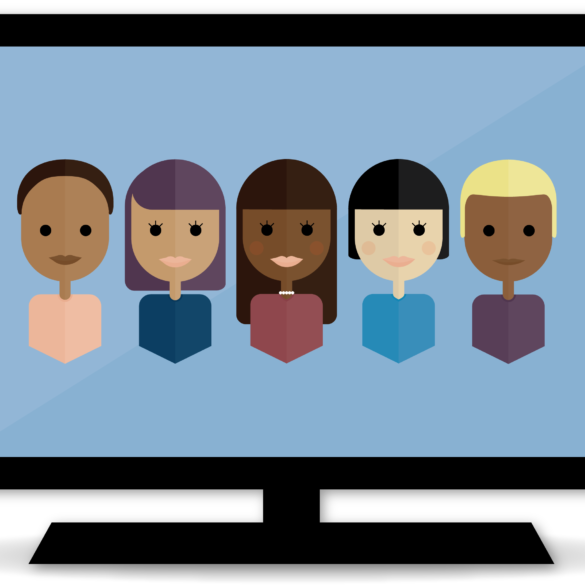Seeing minorities represented in media can help people feel empowered.
Kathy Berryhill walked into the crowded lecture hall surrounded by her friends. It was Friday night of the 2017 Women’s Week at Ball State University, and Kathy was excited to watch a free screening of Hidden Figures.
Hidden Figures is about three African-American women who worked for NASA, serving as the brains behind one of the most important space launches in the history of the United States.
“Each and every time I watch [Hidden Figures], I think, ‘Wow, I can do these things, too.’ There is no dream that’s too crazy,” Kathy says. “I can be happy, I can have a life and a family, and I can still kick butt.”
Kathy, an African-American woman, is not the only minority who feels this way. Joseph Johnson III, a biracial Ball State student, also relates to the representation in this movie.
“Hidden Figures allowed me to be able to understand the struggles of how hard it was for people like my grandmother to achieve her dreams,” Joseph says. “I have had so many doors opened to me that were once closed.”
Seeing this movie and others like it inspired Joseph to speak up.
While white people are still the majority in the U.S., according to the U.S. Census Bureau, they are the slowest growing major race and ethnic group. With higher levels of immigration, Hispanic and Asian populations have seen the most growth over the last decade. More than 50 percent of children in the U.S. are expected to be part of a minority race or ethnic group by 2020.
“The shouts have always been there,” Kathy says. “People are finally listening.”
She sees media representation for minorities as the bottom line of making money for the entertainment industry.
According to a study in the Journal of Youth and Adolescence, interacting with media helps shape who people are, as adolescents often consume media that relates to them or inspires them.
“I need to know I fit into art, too, in a positive way,” Kathy says. “Being a person of color, it’s necessary for people like me to see themselves on TV as a member of society because that’s real, and it’s necessary.”
Kathy says media often represent people of color as “the sidekick or the butt end of the joke.” Minorities see people like them in type-casted roles, which can lead them to believe that’s the only way to be. “I guess I’ll play the goofball,” Kathy says, “because that is all I see.”
According to the Report on Diversity in Entertainment by USC Annenberg, most media do not reflect the demographics of the U.S.
But from blockbuster movies such as Hidden Figures, Black Panther, and Crazy Rich Asians to Netflix and its “Strong Black Leads” campaign, society is seeing a slight shift in the entertainment industry.
Kathy and Joseph believe this shift is evidenced by the increase of shows like Black-ish and Atlanta winning awards.
Donald Glover, also known by his rapper name Childish Gambino, is one of Joseph’s idols. Glover is the writer, creator, and main character of the show Atlanta.
“Having someone that holds these titles as a person I identify with in the media allows me to feel like I can follow my dreams, no matter what they are,” says Joseph.
But Kathy says some things haven’t changed. “I know, in some shows, there is the one really strong black woman,” she says. “But that one strong black woman is usually void of emotions, and if she does have emotions, it’s harsh angry ones.”
Kathy thought Hidden Figures went against this stereotype, characterizing black women in different natures.
“You need a variety of characters because there are a variety of people,” Kathy says. “I think it was empowering because you saw all of them succeed. You saw all of them go through the process of struggles, work through them, and then succeed.”
As Kathy and Joseph saw these stories portrayed in media, it made them feel like they mattered.





